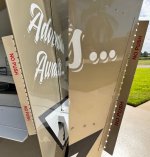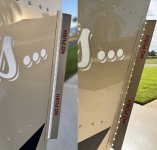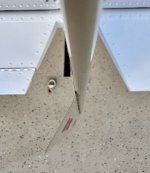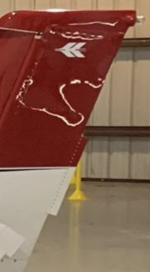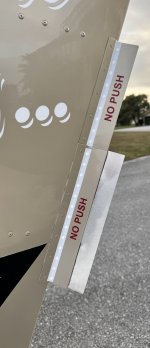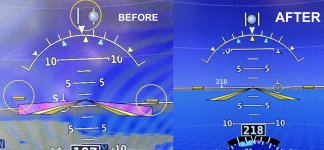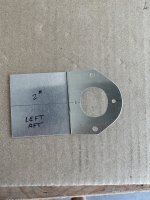RV8AHopeful
Member
So this isn't on a Vans, but it's with respect to an E-Props and Rotax 912iS engine, for which I know is popular on some Vans. I recently changed my prop from a 3-bladed Sensenich to a 3-bladed E-Props (Rotax 912iS) and after the prop change, I'm flying in a slip in cruise -- half a ball out and right wing slightly down. This suggests that the E-Props is producing more P Factor. But *how* is what I'm struggling to wrap my head around. How can a prop, especially a prop with much thinner blades, produce more P Factor on an airframe with the same engine and same horsepower? Does anyone have a good explanation for this? An elementary explanation please as I'm no aerodynamics expert, nor an engineer.
And I say significantly more P Factor because even maxing out the ground adjustable trim tab on my rudder didn't get the ball even close to being centered again while in cruise. I already had about 60% angle on my rudder trim tab with the old prop that let me fly coordinated in cruise. When I put on the E-Props, I increased the trim tab to 90% and still almost half a ball out. Not even sure how to fix that problem, other than remove the E-Props and go back to my old prop. But first, I'd like to try to get a handle on how there could have been such a change in the P Factor on the airframe.
Thanks in advance for your help.
And I say significantly more P Factor because even maxing out the ground adjustable trim tab on my rudder didn't get the ball even close to being centered again while in cruise. I already had about 60% angle on my rudder trim tab with the old prop that let me fly coordinated in cruise. When I put on the E-Props, I increased the trim tab to 90% and still almost half a ball out. Not even sure how to fix that problem, other than remove the E-Props and go back to my old prop. But first, I'd like to try to get a handle on how there could have been such a change in the P Factor on the airframe.
Thanks in advance for your help.



